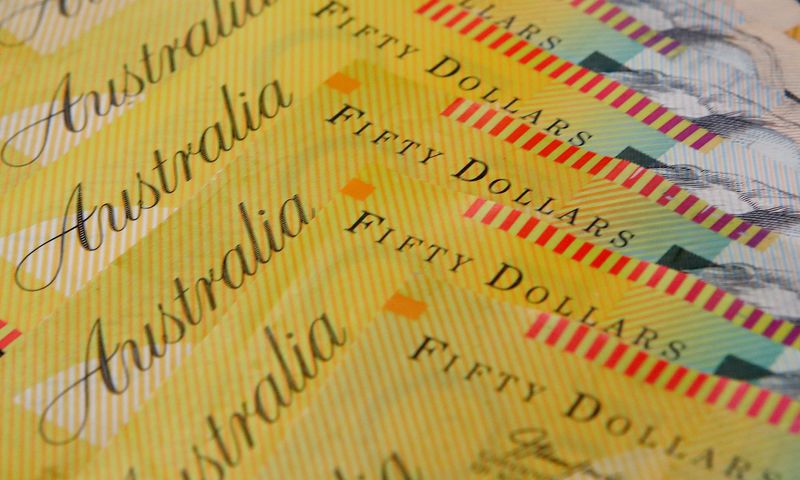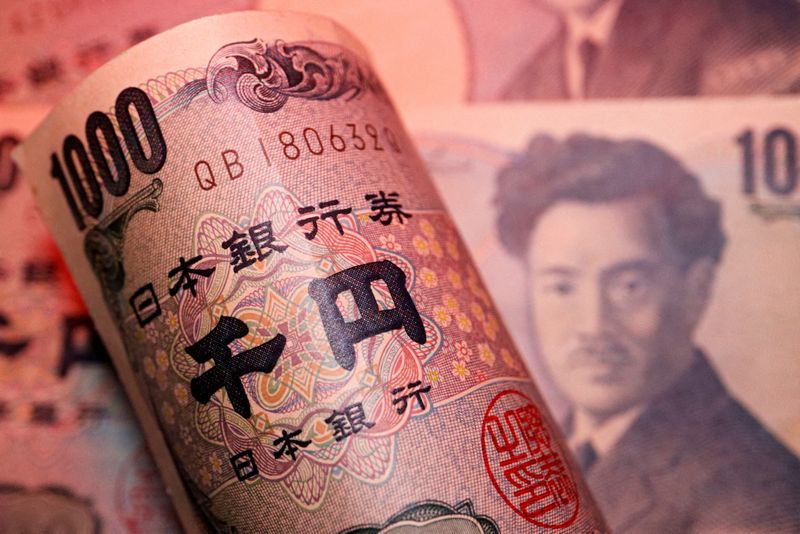Forex
Yen advances for 2nd day ahead of BOJ meeting next week; dollar firmer

By Gertrude Chavez-Dreyfuss
NEW YORK (Reuters) -The yen rose for a second straight session against the dollar on Tuesday, boosted by comments from a senior Japanese politician about normalizing monetary policy, adding pressure on the Bank of Japan to continue hiking interest rates to boost the currency.
The U.S. dollar overall was higher as traders waited for inflation data later in the week, while the Australian and New Zealand dollars continued to struggle after China’s surprise interest rate cuts. The dollar is viewed as a proxy for China risks.
The U.S. dollar was last down 0.9% against the Japanese yen at 155.625. It earlier fell to a five-week low of 155.375 on Thursday.
Senior ruling party official Toshimitsu Motegi said overnight that the Bank of Japan should more clearly indicate its resolve to normalize monetary policy, including through steady interest rate hikes. The BOJ next sets rates on July 31.
Most economists polled by Reuters expect the BOJ to keep rates on hold at the meeting. It last raised rates in March to a range of 0%-0.1% from -0.1%.
“Obviously, the market is positioning itself for the BOJ decision and the Federal Reserve meeting is also coming up,” said Eugene Epstein, head of structured products, North America at Moneycorp.
“But there was no specific news at the moment. If I could gather anything, I would say it’s a continued squeeze. The hawks — all the people who are looking to short the yen — were circling so to speak.”
The yen has found some support on the back of Tokyo’s recent bouts of intervention to prop up the currency and as traders looked to the BOJ’s decision.
In afternoon trading, the , which tracks the U.S. currency against six peers, rose 0.1% to 104.45, after earlier climbing to a two-week high. It recovered from a four-month low of 103.64 last week.
The dollar reacted little to data showing U.S. existing home sales fell more than expected in June as the median house price set another record high.
Home sales dropped 5.4% last month to a seasonally adjusted annual rate of 3.89 million units, the lowest since December, data showed. Meanwhile, the median existing home price soared 4.1% from a year earlier to an all-time high of $426,900, the second straight month it touched a record peak.
In other currencies, the euro was down 0.4% against the dollar at $1.0851, after falling to a two-week trough earlier in the session. Sterling was 0.2% lower against the dollar at $1.2903.
The Australian and New Zealand dollars struggled to regain their footing on Tuesday after China’s move to cut several key interest rates.
China surprised markets on Monday by cutting major short and long-term interest rates in its first such broad move since last August, signalling intent to boost growth in the world’s second-largest economy.
The Australian dollar fell to a three-week low of US$0.6612, while the New Zealand dollar hit its weakest since early May at US$0.5951.
“We have seen a sell-off in commodities overnight and the worry is whether or not China will be able to dig its way out of its slow growth period,” said Thierry Albert Wizman, global FX and rate strategist at Macquarie in New York.
“Some people are seeing the interest rate cuts as a sign of desperation for policymakers, creating a bit of a haven trade for the U.S. dollar.”
Trading was relatively subdued in a week with little in the way of economic data until the release of U.S. personal consumption expenditure (PCE) inflation figures for June on Friday.
In addition, the market’s reaction to U.S. President Joe Biden’s decision to bow out of the election race was muted, though there was some unwinding of the so-called Trump trade, which saw the dollar and U.S. Treasury yields ease a touch.
In cryptocurrencies, the first U.S. exchange-traded funds (ETFs) tied to the price of ether, the world’s second-largest cryptocurrency after bitcoin, began trading on Tuesday.
Ether was last down 0.3% at $3,479, while bitcoin also fell, down 3.2% at $65,985.
Currency
bid
prices at
23 July
07:21
p.m. GMT
Descripti RIC Last U.S. Pct YTD Pct High Low
on Close Change Bid Bid
Previous
Session
Dollar 104.44 104.3 0.14% 3.03% 104.53 104.
index 2
Euro/Doll 1.0851 1.0892 -0.37% -1.69% $1.0896 $1.0
ar 844
Dollar/Ye 155.6 157.1 -0.93% 10.34% 157.04 155.
n 6
Euro/Yen 1.0851 171 -1.25% 8.5% 171.09 168.
84
Dollar/Sw 0.8913 0.8896 0.2% 5.91% 0.8924 0.88
iss 89
Sterling/ 1.2901 1.2931 -0.21% 1.39% $1.2934 $1.0
Dollar 844
Dollar/Ca 1.3771 1.3758 0.11% 3.9% 1.3776 1.37
nadian 53
Aussie/Do 0.6613 0.6643 -0.42% -2.98% $0.6646 $0.6
llar 612
Euro/Swis 0.967 0.9685 -0.15% 4.14% 0.9691 0.96
s 69
Euro/Ster 0.841 0.8419 -0.11% -2.98% 0.8426 0.83
ling 98
NZ 0.5952 0.598 -0.45% -5.8% $0.5981 0.59
Dollar/Do 51
llar
Dollar/No 11.0175 10.9366 0.74% 8.71% 11.051 10.9
rway 429
Euro/Norw 11.9565 11.9115 0.36% 6.5% 11.9942 11.9
ay 195
Dollar/Sw 10.7624 10.7168 0.43% 6.91% 10.782 10.7
eden 066

Euro/Swed 11.6796 11.6735 0.05% 4.98% 11.6972 11.6
en 538

 Forex3 years ago
Forex3 years agoForex Today: the dollar is gaining strength amid gloomy sentiment at the start of the Fed’s week

 Forex3 years ago
Forex3 years agoUnbiased review of Pocket Option broker

 Forex3 years ago
Forex3 years agoDollar to pound sterling exchange rate today: Pound plummeted to its lowest since 1985

 Forex3 years ago
Forex3 years agoHow is the Australian dollar doing today?

 Cryptocurrency3 years ago
Cryptocurrency3 years agoWhat happened in the crypto market – current events today

 World3 years ago
World3 years agoWhy are modern video games an art form?

 Commodities3 years ago
Commodities3 years agoCopper continues to fall in price on expectations of lower demand in China

 Economy3 years ago
Economy3 years agoCrude oil tankers double in price due to EU anti-Russian sanctions


























